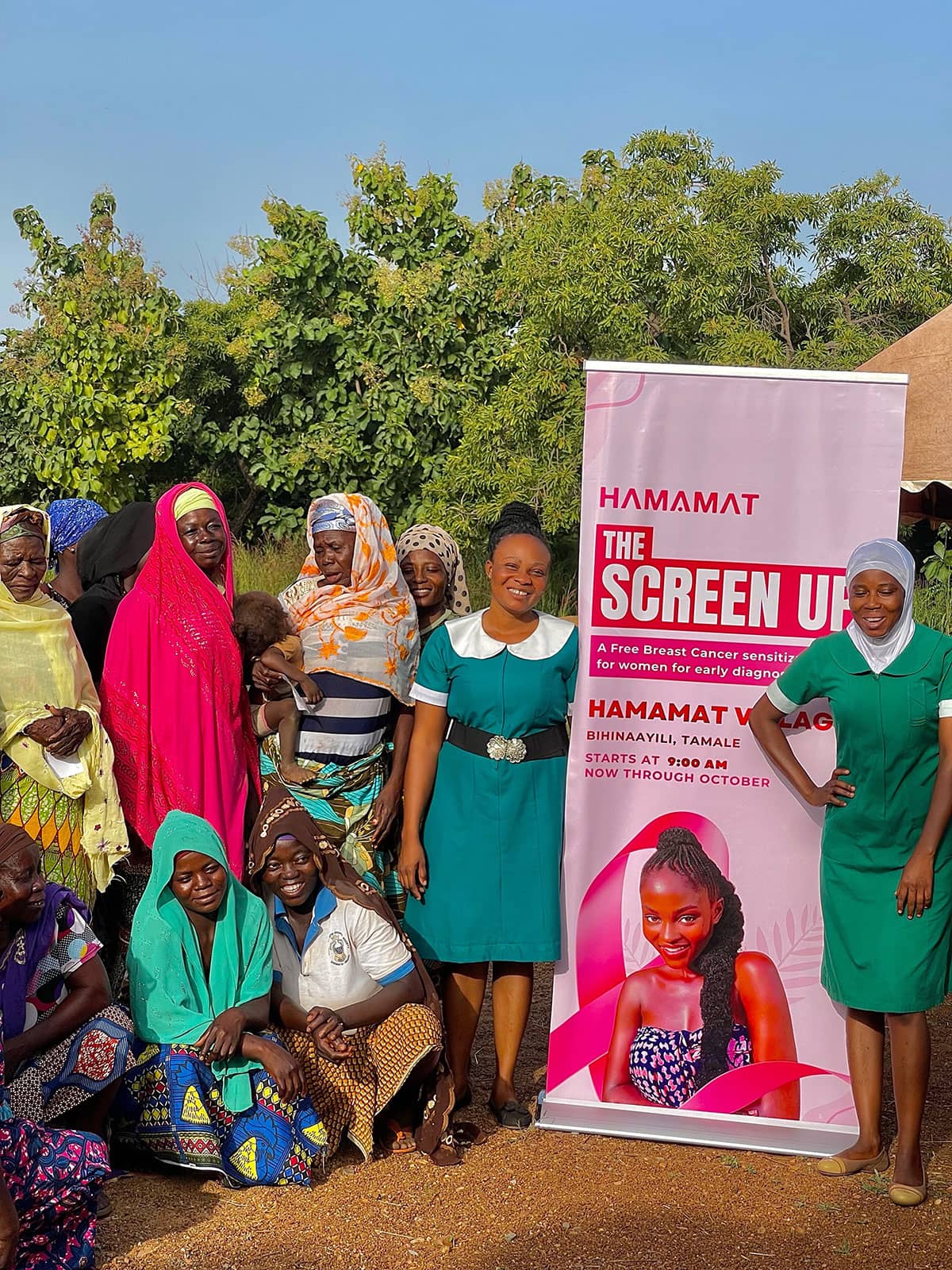
Violence against women (VAW) is a global problem affecting millions of women and girls of all cultures, religion, socio-economic strata, educational levels and other diversity. It is recognized as a human rights issue that manifests itself in physical psychological, sexual, social and cultural forms.
Breast Flattening or Breast Ironing?
The process during which young pubescent girls' breasts are ironed, massaged, flattened and/or pounded down over a period of time (sometimes years) in order for the breasts to disappear or delay the development of the breasts entirely.

While studies have found that “breast ironing” is practiced in Chad, Guinea Bissau, Togo, and Benin, it is most common in Cameroon, where nearly a quater of girls and women have had their breasts “ironed.”
The United Nations (UN) states that Breast Ironing affects 3.8 million women around the world and has been identified as one of the five under-reported crimes relating to gender-based violence. The custom uses large stones, a hammer or spatulas that have been heated over scorching coals to compress the breast tissue of girls as young as 9 years old. Those who derive from richer families may opt to use an elastic belt to press the breasts so as to prevent them from growing.

The mutilation is a traditional practice from Cameroon designed to make teenage girls look less ‘womanly’ and to deter unwanted male attention, pregnancy and rape. The practice is commonly performed by family members, 58% of the time by the mother. In many cases the abuser thinks they are doing something good for their daughter, by delaying the effects of puberty so that she can continue her education, rather than getting married.
Violence is the result of the complex interplay of individual, relational, social, cultural and environmental factors. Violence against women has serious consequences whish are far reaching and includes the erosion of self-esteem, self-worth, physical, mental and psychological health etc.


There are many traditional African Cultural practice that affect the heath and wellbeing of African Women
"If society has been silent about it up to now is because, like other harmful practices done to women such as female genital mutilation, it was thought to be good for the girl...even the victims themselves thought it was good for them.” (Flavien Ndonko, Anthropologist and local representative of German Development Agency GTZ)


African-American women have had a lower incidence, yet higher mortality rate from breast cancer compared with White-American women. African-American women also have had a higher risk for early-onset, high-grade, node-positive, and hormone receptor-negative disease. Similar features have characterized hereditary breast cancer, prompting speculation that risk factors could be genetically transmitted. Further evaluation of this theory required the study of breast cancer among women from sub-Saharan Africa because of their shared ancestry with African-American women.

The global incidence of breast cancer (BC) is rising, especially in low and middle income countries. So learning and teaching our community about harmful practices that have terrible negative effects like breast cancer is important to us.
Sometimes, a woman's breast can be sore such that it is difficult to treat and this could lead to death. We call it yil'le ngwoom dwongo (sore breast which will not heal).

As there appears to be no translation for the term breast cancer in either local language, a lack of knowledge of breast cancer can be seen as both confounding and being confounded by a lack of linguistic capital.
The most common breast disease in the village is what participants referred to is yil'le fusem (swollen breast), which usually occurs after a woman has given birth. Participants commonly thought that when a woman is unable to breastfeed after giving birth, this can lead to a swollen breast or ngwoom pongwa (a boil in the breast). This is understood to be a result of an accumulation of excess breast milk. Herbal products are the most common method of treatment.

These are thought of as being very potent for the cure of swollen breasts in women. Due to historical and cultural factors, participants believe in the efficacy of these treatments.
Participants also held misconceptions as to what constitutes breast cancer, explaining that sometimes women with large breast sizes have the propensity to be at risk of developing long-term breast cancer. However, a distinction was made between slim women with large breasts and women who are considered morbidly obese with bigger breasts. Women who experience excruciating pain in the breast or have yil'le chichiu (breast lumps) are also thought of as at risk as are those who have constant discharges from the nipple irrespective of whether they are breastfeeding or not. Some respondents also identified breast abscesses (yil'le ngunim) that will not heal as a symptom of breast cancer.
The probability that a woman who lives to age 65 in Kampala would develop a cancer is only 40% lower than that of her European contemporary. What differs markedly is the probability that the African woman will live to be 65 years of age compared to women in developed countries. Even if incidence is held constant, the change in this probability as a result of increased life expectancy at birth is an important cause of the increasing prevalence of breast cancer in Africa.








